A relictual troglomorphic harvestman discovered in a volcanic cave of western Argentina: Otilioleptes marcelae, new genus, new species, and Otilioleptidae, new family (Arachnida, Opiliones, Gonyleptoidea)
- PMID: 31644592
- PMCID: PMC6808334
- DOI: 10.1371/journal.pone.0223828
A relictual troglomorphic harvestman discovered in a volcanic cave of western Argentina: Otilioleptes marcelae, new genus, new species, and Otilioleptidae, new family (Arachnida, Opiliones, Gonyleptoidea)
Abstract
The troglomorphic harvestman Otilioleptes marcelae gen. nov., sp. nov. from the basaltic cave Doña Otilia, Payunia region, Mendoza Province, Argentina, is described. Its systematic affinities were studied through cladistic and Bayesian analyses that included representatives of Gonyleptoidea; it was determined to represent a new monotypic family, Otilioleptidae fam. nov., occupying a basal position within the clade Laminata. This species shows accentuated troglomorphic traits, typical for troglobitic harvestmen: elongated appendages, depigmentation, reduction of eyes and fading of scutal sulci. Additionally, it almost lacks sexual dimorphism, the distal portion of coxa IV is not completely fused to the stigmatic segment, and penis morphology is remarkably divergent with other Laminata; these features cannot be attributed to cave adaptation and may reflect early lineage divergence. Otilioleptes marcelae is the first troglobitic gonyleptoid known from a lava tube. The xeric environments around the cave (Patagonian ecoregion) and the paleoenvironmental history of the area suggest the relictual character of O. marcelae. Scattered evidence supports a long time evolutionary scenario and a presumable relationship with the Chilean opiliofauna (especially with genus Osornogyndes). A comparative overview of all known troglobitic gonyleptoids is provided. The urgent need to protect this new species and its unique cave environment is emphasized.
Conflict of interest statement
The author has declared that no competing interests exist.
Figures

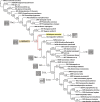
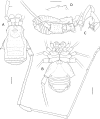

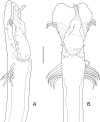

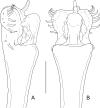
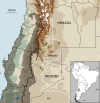


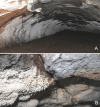
References
-
- White WB. 2005. Volcanic caves In: Culver DC, White WB, eds. Encyclopedia of Caves. Elsevier, 599–602.
-
- Culver DC, Pipan T. 2009. The biology of caves and other subterranean habitats Oxford: Oxford University Press.
-
- Maury EA. 1988. Triaenonychidae sudamericanos. V. Un nuevo género de Opiliones cavernícolas de la Patagonia (Opiliones, Laniatores). Mémoires de Biospéologie 15: 117–131.
-
- Maury EA. 1986. Hallazgo aracnológico en cavernas del oeste argentino. Salamanca 2(2): 20–24.
-
- Acosta LE. 2002. Patrones zoogeográficos de los opiliones argentinos (Arachnida: Opiliones). Revista Ibérica de Aracnología 6: 69–84.
MeSH terms
LinkOut - more resources
Full Text Sources

